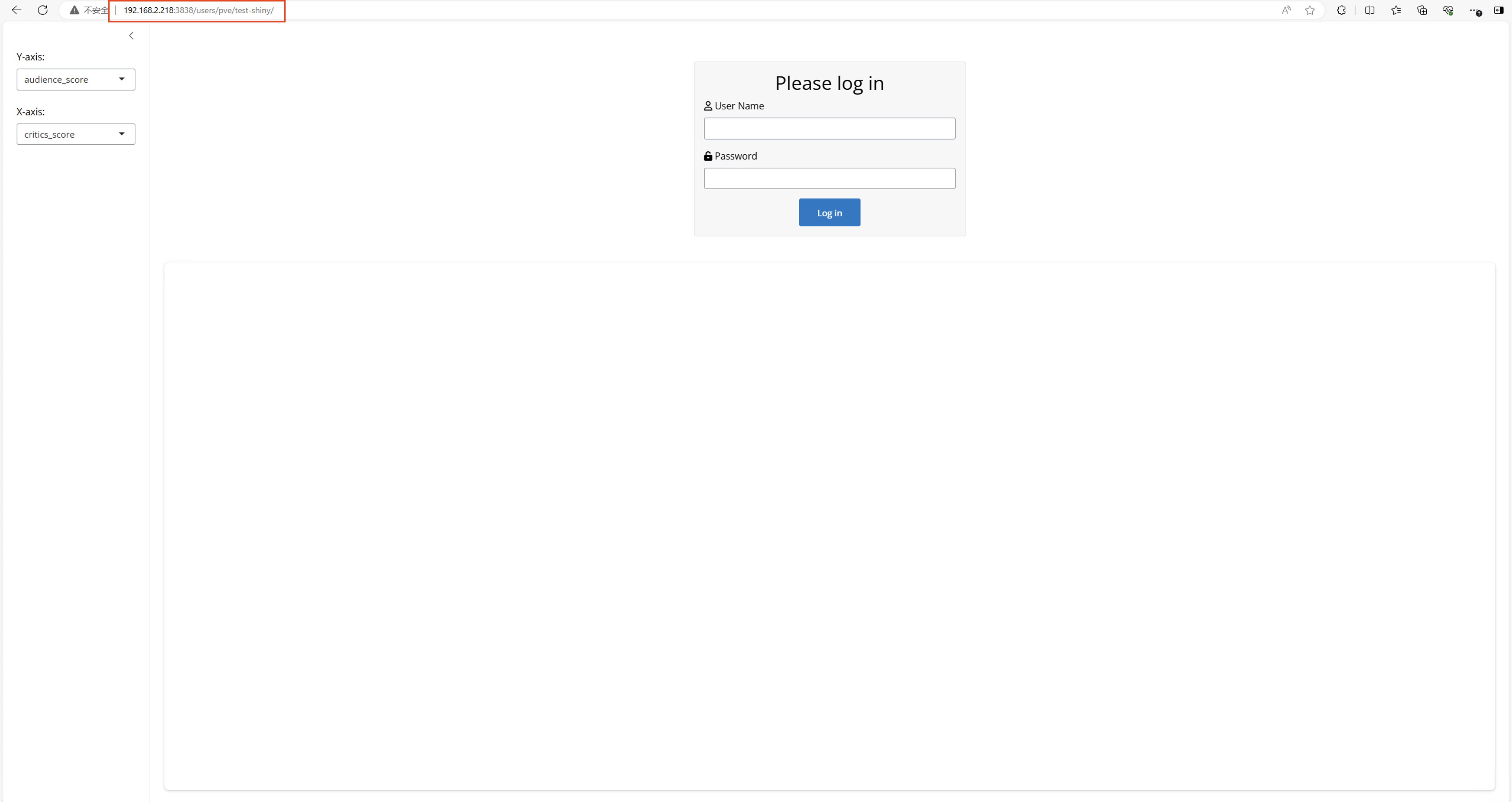Shiny Server实现用户独立的 Shiny 应用环境
背景
Shiny Server是默认的配置如下,内容很明了,指明了运行的用户为shiny,端口,以及应用和日志的目录。
# Instruct Shiny Server to run applications as the user "shiny"
run_as shiny;
# Define a server that listens on port 3838
server {
listen 3838;
# Define a location at the base URL
location / {
# Host the directory of Shiny Apps stored in this directory
site_dir /srv/shiny-server;
# Log all Shiny output to files in this directory
log_dir /var/log/shiny-server;
# When a user visits the base URL rather than a particular application,
# an index of the applications available in this directory will be shown.
directory_index on;
}
}
这种配置下发布shiny应用的时候只需将应用复制到固定位置下 /srv/shiny-server即可。一直这么用着到也没有什么问题,直到遇到有包需要写文件到应用目录下。报如下错误。
Error in (function (file = if (onefile) "Rplots.pdf" else "Rplot%03d.pdf", :
cannot open file 'Rplots.pdf'
Calls: runApp ... eval -> eval -> ..stacktraceon.. -> par -> <Anonymous>
Execution halted
原因就是shiny运行用户为shiny,但/srv/shiny-server下的目录为其他用户,没有权限。详见下面链接
在这种情况下,解决有两种方式:
-
将有权限问题的应用目录设置为shiny用户:
chown -R shiny:shiny test-shiny-app。 -
修改Shiny Server的部署方式,shiny应用不放在同一的位置,用户在home目录独立部署 Shiny应用。
第一种方式有弊端,就是多用户的时候每次用户部署后都需要root用户查询设置目录的用户,当然可以开发一个系统来发布shiny应用,这样的话又额外引入了工作量。这里介绍一下第二种方法,单独设置用户的发布目录。
实现用户的独立Shiny 应用环境
下面示例使用用户名为pve,用户组为shinyusers,shiny应用为test-shiny
参考官方文档:https://docs.posit.co/shiny-server/
修改Shiny Server部署方式
-
添加shinyusers用户组,用户限制可以发布应用在home目录的用户
groupadd shinyusers -
将需要发布应用的用户添加到shinyusers用户组
usermod -aG shinyusers pve -
修改配置文件
修改
/etc/shiny-server/shiny-server.conf文件为如下内容# Instruct Shiny Server to run applications as the user "shiny" run_as shiny; # Define a server that listens on port 3838 server { listen 3838; location /users { run_as :HOME_USER:; user_dirs; directory_index on; members_of shinyusers; } # Define a location at the base URL location / { # Host the directory of Shiny Apps stored in this directory site_dir /srv/shiny-server; # Log all Shiny output to files in this directory log_dir /var/log/shiny-server; # When a user visits the base URL rather than a particular application, # an index of the applications available in this directory will be shown. directory_index on; } }配置主要添加了
/users路径。run_as :HOME_USER:;用:HOME_USER:占位符来表示用户的主目录。members_of shinyusers;限制用户组为shinyusers。 -
重启Shiny Server
systemctl restart shiny-server
用户部署Shiny应用
这时就不必将shiny应用拷贝到固定的位置了,只需要拷贝到Home目录下的ShinyApps文件夹下即可。没有ShinyApps文件夹就自己创建一个。

然后在浏览器上访问路径也有变化,我的例子的路径为/users/pve/test-shiny/,路径规则为/users/<username>/<shiny-app-name>/.

我的的展望
对于Rstudio和Shiny这一套私有化部署的方式其实还是不太友好,其严重依赖linux账户体系,不能做到账户的打通,还有些权限限制,shiny应用的话每个也都需要单独添加认证。 我这里有个想法,Rstudio这边可以直接接OIDC认证,然后Shiny这边再开发一套系统将shiny包一层做个网关,当然认证体系也使用OIDC认证,主要功能就是提供发布应用的功能,然后做所有应用的代理以及访问权限的控制。以后有时间可以搞搞。